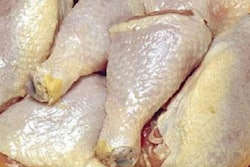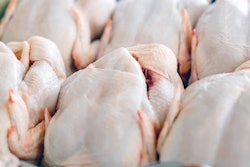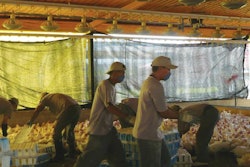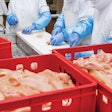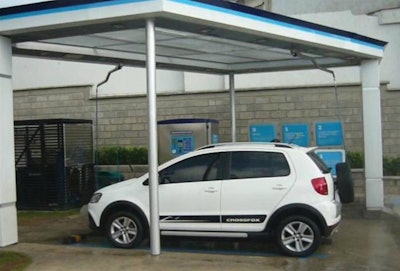
Cleaning and disinfecting the poultry processing plant is a daily necessity, but it comes with a cost. These costs not only comprise investment in, and replacement of, equipment but also time and impact on workers.
Several operations need to be completed as part of the plant sanitation program, including the removal of any solid materials, washing and brushing with detergent, rinsing and disinfection. The equipment normally used to perform these tasks is heavy, subject to wear and tear, and has an impact on workers.
There are, however, examples from other sectors where cleaning is conducted more efficiently. Take for example, how a car wash operates. The structure commonly used in car washes could be applied to the processing plant, bringing with it several benefits.
Alternative cleaning design
Typically, a processing plant depends on heavy-duty wall-mounted hoses that need to be reeled out across the plant floor and reeled back once cleaning is complete.
These cumbersome hoses can make cleaning the overhead conveyor difficult and extremely tiring, and then there is the constant wear and tear as hoses are reeled out, moved around the plant, and put way at the end of the cleaning shift. Added to this, hose guns can become damaged if dropped onto the floor.
Car washes, however, have overcome many of these problems and can serve as a model for the poultry processing plant. Typically, they are compact, efficiently laid out, have a hose support structure that stops hoses ever hitting the ground, and revolving supports that allow hoses to be moved 360 degrees, safely, comfortably and quickly. Car wash hoses are light, made of durable materials, and use ergonomically designed guns.

Hoses that can be moved 360 degrees make accessing equipment easier, more comfortable and safer.
Additionally, each car wash operation has its own set time for completion.
Application in the processing plant
The principles employed in car washes can be adapted and adopted in the poultry processing plant by following these steps:
- In each section of the poultry processing plant, install a high-level H-bean between two parallel walls.
- Install a trolley with a rotating support on the H beam, similar to those used on bridge cranes.
- The support will hold the hose, similar to those used in pressure washers. In contrast to the heavier hoses often used in processing plants, these hoses are very light. Their support has a retracting mechanism, ensuring that the hose never comes into contact with the processing plant floor, minimizing damage.
- The hoses will end with guns similar to those used on pressure washers. This type of gun tends to be very light, and their design allows the user easy access to any part of the equipment or processing plant section without ever having to get too close.
- One of the two suspended hoses supplies water, which can be either at room temperature or hot, while the other hose will be fitted with a specialized brush to automatically deliver detergent.
- On each of the parallel walls, there will be a storage unit to hold the guns when not in use.
- Once the necessary times have been established to complete the various cleaning tasks, a timer can be set, ensuring that the cleaning operations are completed within the time deemed necessary.
Carwash system in practice
Once chicken processing has finished, cleaning staff should collect all solid materials that may be present on the equipment, walls and channels, or on the floor.
When this has been completed, one worker starts to wash each piece of equipment, while a second worker will brush down the equipment with detergent.
Once these tasks have been completed, the first worker will then rinse down the machinery and other equipment. Lastly, the second staff member applies disinfectant.
This two-person sanitation team then moves to the next section of the processing plant to clean that. The number of work groups will be proportional to the size of the processing plant and to the amount of equipment that needs to be cleaned in the various sections.
Moving away from commonly used, independent hoses to a system based on how car washes operate can reduce the time needed to clean the plant, and also cut down on the amount of water and detergent needed.
In addition to this, the cost of replacing hoses and hose guns is lower because neither are ever subjected to friction or knocks against the processing plant floor.
www.WATTAgNet.com/articles/13287
